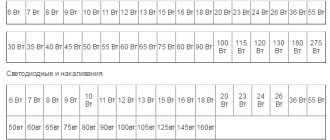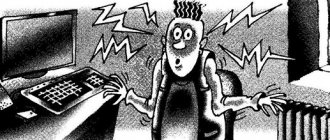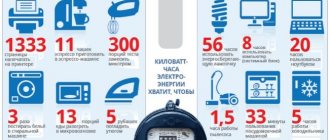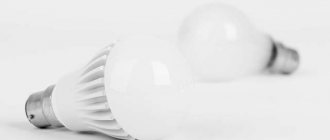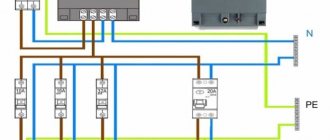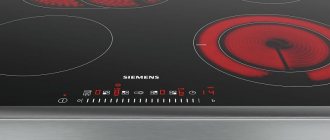How much energy does a computer consume?
Hello, friends! With the help of a computer, people can access the Internet, search for information, earn money and play games. During operation, the computer consumes electricity, and this wastes money.
Naturally, the question arises, how much energy does the computer consume? Let's consider this issue in more detail. To do this, you need to look at how much power your computer consumes.
Computers can be divided into the following groups:
- old production;
- average in power;
- gaming computers.
Next, we highlight the average power of computers. For example, an old computer will consume 60-70 watts of electricity per hour.
A modern computer consumes much more energy. This is 120-200 watts per hour. Depending on its configuration and peripheral devices - monitor, printer.
Gaming computers are considered the most powerful. They can consume a lot of electrical energy. Approximately 340-400 watts.
Knowing these indicators will help determine how much money is spent on paying for electricity.
How much electricity does the computer consume and should I turn it off?
With the increase in electricity tariffs, more and more people are interested in how much electricity the computer consumes , and if it consumes a lot, then turn off the computer , and if so, how? The author of this article made his own measurements, and also looked into other sources about PC power consumption.
The first thing that should be pointed out is that a switched-off desktop with an uninterruptible power supply (UPS) not turned off (not turned off), as this is not surprising at first glance, consumed quite a lot of electricity. When the author began to turn off the uninterruptible power supply at night or when he was away from home for a long time, electricity consumption went down.
Measurements were made with an ammeter of industrial frequency current on a powerful 2.35 Ohm resistor connected to the break of the plug that powers all computer devices, including the modem. Well, then, Ohm’s law dotted all the i’s. (It is worth noting that special miniature power consumption meters for household appliances are currently on sale).
So, while the desktop computer was running, even in the absence of sound in the speaker system, its consumption was impressive and amounted to 230 W for the author (LCD monitor with a diagonal of 19 inches).
After turning it off, the uninterruptible power supply (UPS) still consumed electricity and not less than a 30 W incandescent light bulb, this was very surprising and puzzling. It’s not for nothing that people are now buying laptops, ultrabooks, like here: (website, for example, -catalogue.technoportal.ua/noutbuki/variations-ultrabuki.html), and tablets.
The measurements gave a clear answer to the question of how much electricity the computer consumes and whether to turn it off in relation to its desktop version. The answer is yes, turn it off and definitely. However, there is one “but” in this statement. Energy consumption when the PC is turned off is mainly due to recharging the battery in the UPS. It will have time to charge perfectly during long-term computer operation. But if the operation does not last long, the battery of the uninterruptible power supply may not have time to recharge.
In general, how much energy do electronics in the house consume? Tiny ones, right? That's how it is. But in the world, because of these crumbs, electricity consumption is rapidly growing, and sources report that it has already exceeded 10% of all world consumption.
READ ALSO: Democracy and free markets - why did the Americans need them?
Is it possible to somehow reduce power consumption so as not to turn off the desktop when the user is absent for a short period of time (and this happens most often in the office)?
Yes, you can. To do this, in the computer management menu, which is full of all sorts of things, there is a “Power Options” mode (it may say “display mode” or a little differently). This is what you need to configure when, after a short required time, while you do not touch the keys, the computer monitor turns off. The first time you touch the mouse, it (the monitor) will turn on again or the screen on the laptop will become active. There, after a specified time, you can automatically put the computer into sleep mode. The time interval after which the computer turns off depends on the user’s setting in the “power mode” menu or a similar mode. The larger the PC display size, the more effective the mode is.
Putting the monitor (screen) into sleep mode is all the more justified. Replacing monitors from electro-ray tubes to LCD monitors led to a noticeable reduction in electricity, but no more. A monitor (screen) can consume up to half of a computer’s electricity; the larger the screen diagonal, the higher the consumption. For the author, a temporary transition to working with a 22-inch diagonal LCD display (consumes more than 200 W) to 13 inches led to a reduction in electricity consumption by 30-40 kW/hours per month.
Researchers call the following consumption values for monitors: LCD 15″ - 18″ - 30 W in active mode and 2 W in sleep mode, LCD 17 " - 35 W and 0-15 W, respectively. The old CRT consumed 85 watts, and in power management mode - 67 watts. The computer's consumption also depends on the video card used, as well as the sound volume in the speaker systems. Thus, when choosing a computer, it is very useful to look at its power consumption in various modes.
READ ALSO: Economy of Ukraine 2014-2021 according to foreign data and statistics
In general, the consumption of a modern average computer lay between 36 W and 250 W when it was active, and in any case between 1 W and 27 W in low power mode.
A completely different era of power consumption for desktop computers (desktops) came after the start of production of monitors using LED technology, which essentially consist of many monitors. For example, a 27-inch monitor consumes only 27 W of electricity. Miniature system units (desktops), which are also called nettops, consume less than 30 W of energy, and often no longer require uninterruptible power supplies.
Old PCs, like many other electrical devices, consume energy even when they are turned off. The average old computer still consumes between 1.5 watts and 3 watts when it's turned off but plugged in, some of which goes to power the tiny battery that's responsible for keeping track of the current date and time.
Therefore, again, to the question of whether to turn off a traditional desktop PC from the outlet (or with a switch on a special extension cord), the answer is yes, turn it off. (However, after a while, the UPS will begin to emit sound signals - “beep” about the loss of electricity. How this can be eliminated, read the material below about ways to reduce electricity consumption).
That's enough. This is how we found out how much electricity the computer consumes and whether to turn it off.
In conclusion, we should again remind you why a computer consumes electricity when turned off. This is a consequence of constant recharging of batteries - in the computer itself - batteries storing information, for example, about the current time, in the power source - continuous charging of the IBS battery. So everything written about disabling IHD should be measured and weighed.
Was the article useful and did you like it? Then click on the social media buttons (Twitter, Facebook, etc.) and others will know about it. And, another useful article on the topic: Networks, the latest wireless computers, How to reduce energy consumption, and a subscription to new materials on the site will also be useful, subscription details are below.
How much energy does your computer consume in sleep mode?
Sleep mode is an inactive state of computer applications, drivers and other computer devices. In simple words – the sleep of a computer system. The computer is turned on at this time and the screen is darkened. If you move the computer mouse, it will resume working.
In sleep mode, the computer consumes little energy, on average 3.5-5.0 Watts.
There are two more types of computer sleep mode:
- Hibernation. When the computer goes into complete sleep and all information about its work is dumped onto the hard drive. In this mode it consumes about 10 watts per hour.
- Complete shutdown of the computer. If you turn off the computer and leave the plug in the socket, you will notice how its indicators are lit. For example, on a laptop. In this case, there is also a minimum energy consumption - 3 watts per hour.
Now we know how much energy the computer consumes. Next, we will analyze the energy consumption indicators of laptops and calculate the energy consumption.
Black background and bright light
One of the common myths is that to display black, any LCD monitor needs to spend less kilowatts than when displaying a rich, rich picture.
This is only partly true. In fact, the backlight continues to work, and voltage is supplied to the matrix to ensure that the color black is displayed.
However, there is one small “But”, what would we do without it, right?
Monitors with dynamic contrast still consume less electricity in this mode. The fact is that greater contrast can be achieved by changing the backlight intensity - that is, the black areas of the screen are illuminated less than the colored ones.
However, we are not talking directly about kilowatts, because the difference is only a few watts. Therefore, setting a regular black background as desktop wallpaper is not the most rational solution: it is unlikely that you will be able to save a significant amount, but such despondency can still ruin your mood.
Also, how often do you stare at your desk while working on your computer?
Separately, I would like to note that in sleep mode or standby mode, when the display turns off at a given interval of computer inactivity, the difference is not very noticeable. In fact, the LCD matrix is not the most voracious component in terms of energy consumption.
Other electronics continue to operate as normal, and these are the ones that consume the most energy. However, in this way you can increase the life of the monitor. You can read more about this here.
I also recommend paying attention to such a parameter as brightness. The more powerful the backlight, the more electricity the display “eats” per day. This is true for any type of lamp - both LCD and LED, as well as plasma panels.
How much energy does a laptop consume?
Laptops are often used by people, both for making money online and for other work. They also consume energy. But, not as much as desktop computers.
For example, an average-performance laptop consumes energy per hour - 19-80 watts. Of course, if we take gaming-powered laptops as an example, they will consume a lot more energy.
Let's give a specific example. Let's take a regular laptop from the manufacturer Asus with model number X55V. On average, it consumes 19 watts of energy. If you work on it for 10 hours, you get 190 watts. And if you use it for two hours, naturally the energy consumption will be less.
How many kilowatts does a sleeping computer consume?
Even in sleep mode, your PC will consume electricity, although in disproportionately smaller amounts. In this situation the machine:
- disconnects the hard drive from the network;
- all running programs are stored at the RAM level;
- When activated, the PC resumes operation almost instantly.
Here electricity is consumed within 10 percent of the maximum power.
Any computer also has a hibernation mode. In this situation:
- the machine turns off completely;
- all running applications are saved in a separate file;
- takes longer to start.
As a result, the system unit uses energy very economically - consumption here is only twice as high as when it is turned off (4 W).
How to find out how much electricity your computer actually consumes
You can easily find out how much electricity your computer or laptop consumes. Use two effective methods:
- determine electricity using a Wattmeter;
- You can calculate your computer's power consumption yourself.
Let's take an external Wattmeter device to analyze the computer's electricity. If you don’t have it, you can buy the device in any online store that sells technical devices for computers (Screen 1).
Next, connect the cable from the Wattmeter to your computer. Then, press the “Start” button on the Wattmeter equipment and look at the computer’s energy consumption indicators on the Wattmeter screen.
Let's calculate the energy consumption of a laptop. As an example, let's take the Asus laptop discussed above.
You need to look at the characteristics of the power supply that powers the laptop. Find the line there - “OUTPUT”. The data will be written below - +19V-4.74A (Ampere). Next, we multiply these numbers - 19 * 4.74 = 90 Watts per hour. If we want to find out how much money we spend on energy from a laptop, move on to the following data.
We divide 90 watts by 1000 and get 0.09 kW per hour. Next, we multiply 0.09 by the electricity tariff. For example, 3.77. And we get 0.3393. Finally, the last calculation. Indicate how many hours you work at the computer. For example, 6 hours a day, multiply by 30 days and 0.3393. As a result, the laptop spends 61 rubles on electrical energy per month.
Connected devices.
Each such device has a technical passport, which, among other things, indicates energy consumption. All that remains is to add the data to get the final figure. Calculation of computer energy consumption. The load on the power supply never reaches its peak, otherwise, as mentioned above, it would automatically turn off. Summing up all the components, multiplying by the operating time - this is exactly how many kilowatts the computer consumes.
Typically, the expense ranges from 400 (for office) to 800 (for gaming) rubles per month, respectively, about 4800-9600 thousand per year.
Hello everyone, friends! Today we continue the topic of saving energy and in today’s article we will try to find out how much electricity a typical home computer consumes.
To determine the consumption of the computer as a whole, you need to add up all the separately connected devices, for example, as a rule, this is the system unit - the heart of the computer, or as some mistakenly call the processor, and it is worth taking into account the consumption of the computer monitor.
To determine consumption, they usually look at the power of the power supply; in computers it is from 350 watts, most often from 450 watts in modern computers. Out of ignorance, to determine the power consumption of a computer, they take and consider the consumption equal to the power of the power supply of the system unit, but this is not correct. Electricity consumption depends directly on the load on the processor by applications.
During work
If you are just working on a computer, for example browsing the Internet, or typing or viewing photos, then the approximate electricity consumption will be from 120 to 160 watts on average, or from 0.14 kilowatts (kW).
During games
If you use energy-intensive applications that require powerful, coordinated operation of all parts of the computer, for example, video games, or working with graphics, power consumption in this case can reach values from 300 to 340 watts per hour, or 0.3 kW.
Old computers
Old computers with an age of 7-10 years consume electricity much less than modern ones; these are computers usually with Windows Xp installed; electricity consumption will average 70 W/hour.
How much electricity does our computer consume per hour? We rarely ask this question when purchasing a new system unit. We are usually much more concerned with indicators such as memory size and processor power. We only think about the light it burns every day when we receive another receipt.
In general, we should recognize the obvious truth - modern manufacturers are doing everything in their power to reduce the energy consumption of computers. The results of their work are visible to the naked eye - modern units, in comparison with old machines that went on sale a decade ago, consume several times less electricity. Here it is advisable to draw the first logical conclusion - the more modern the PC, the more economical it is.
Reducing your computer's power consumption
Of course, modern computers consume small amounts of electrical energy. The smaller the computer, the less it will consume, and gaming computers consume a lot of energy.
Computer users have the opportunity to reduce their energy consumption themselves. To do this, you can do a number of simple steps:
- Turn down the brightness of the monitor screen. You need to move the brightness slider to the left, reducing its brightness;
- work at the computer according to a schedule, do not leave the computer on if you are not working on it;
- buy laptops. Mobile computers solve the issue of energy saving;
- optimize your computer. Some programs (games) can take energy. Therefore, if they are not needed, it is better to completely remove them and clean the disk.
I hope these tips will help you reduce your computer's power consumption.
How to reduce your computer's power consumption
As you can see, in any of the modes the PC continues, albeit slightly, to consume electricity. Therefore, if possible, try to disconnect it from the network. And a few more tips for saving money when using a computer.
- Buy energy efficient models;
- If it is not important for you, give preference to a laptop rather than a desktop PC;
- Do not turn up the brightness on the monitor “all the way”;
- Set aside a certain time for work or play, after which turn off the computer. This is much more economical than multiple “sessions” of several minutes.
- Set up a power plan. Set the optimal modes, depending on your schedule and duration of work.
Related Posts
How to choose a water meter?
How gas meters are verified
Useful little things from aliexpress
Pay attention to the efficiency of the computer power supply when purchasing
When you buy a computer or laptop, carefully study the characteristics, in particular the efficiency (coefficient of performance) of the power supply. Look at its power and how many watts it consumes. Before purchasing, it is advisable to decide what the computer is needed for.
If for work, then you can limit yourself to a simple computer or laptop that will consume a minimum amount of energy.
When it comes to gaming computers, they are designed for gamers who love to play computer games, but they have to pay for it with additional power consumption.
